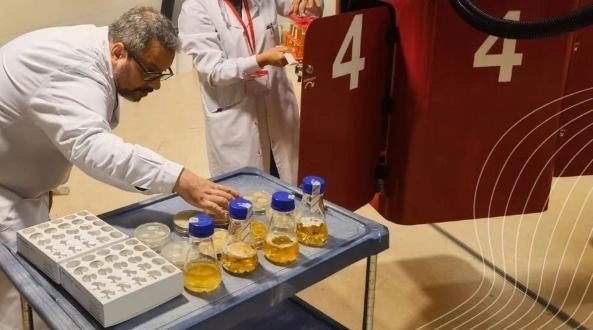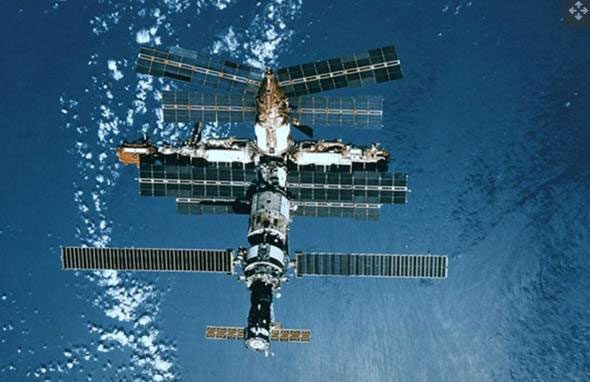“We will not be able to completely eliminate fungi when venturing into space, aboard the space station, so we need to understand them,” scientists shared.
A Surprising “Guest” on the Space Station

Scientists conducting an experiment with fungi – (Photo: UNOOSA).
In 1988, astronauts aboard the now-defunct Mir Space Station of Russia noticed what appeared to be a “veil” from outside the station covering one of their windows.
This substance even began to “creep” inside the station by slowly destroying the titanium quartz surface of the window. The astronauts later discovered that these were actually types of fungi that had unintentionally been “carried” into space.
This type of fungus managed to adapt to the space environment and not only survived but thrived on windows, control panels, air conditioning units, and insulation cables. It even contaminated the crew’s precious food and water supply.
This was also the first time fungi were discovered to have caused significant damage to a space station. And it was not the last time.
From “Enemy” to “Savior”

The Russian Mir Space Station as seen from the Space Shuttle Atlantis during docking on January 15, 1997 – (Photo: NASA).
Many species of fungi generated in space act like detectives. They remain inactive during launch and on the journey into space, but later they “activate” and reproduce, forming thick mats living in various areas within the space station.
These mats not only threaten the health of astronauts but also the electronic equipment, plumbing systems, and other components on the station.
Since the incident in 1988, there have been numerous efforts to establish effective sanitation procedures to remove fungi from the space station and equipment before microorganisms cause serious damage.
Scientists have also studied their growth and behavior in microgravity environments. They are particularly interested in their ability to adapt to repair DNA damage caused by space radiation – which could be genuinely beneficial for crews on long-term space missions.
For instance, in 2016, researchers at NASA’s Jet Propulsion Laboratory in California sent fungi into space for the first time, aiming to conduct studies on the International Space Station (ISS). The team examined how the ISS environment prompted the Aspergillus nidulans fungus to produce certain molecules that it does not produce on Earth.
Recently, a group of scientists collaborated with the European Space Agency (ESA) to conduct experiments on fungi under increased gravity to better understand how these organisms thrive in the harsh environment of space.
If scientists can understand the growth mechanisms of fungi, one day the space industry may use fungi to develop settlements in space, and even for drug production.


















































